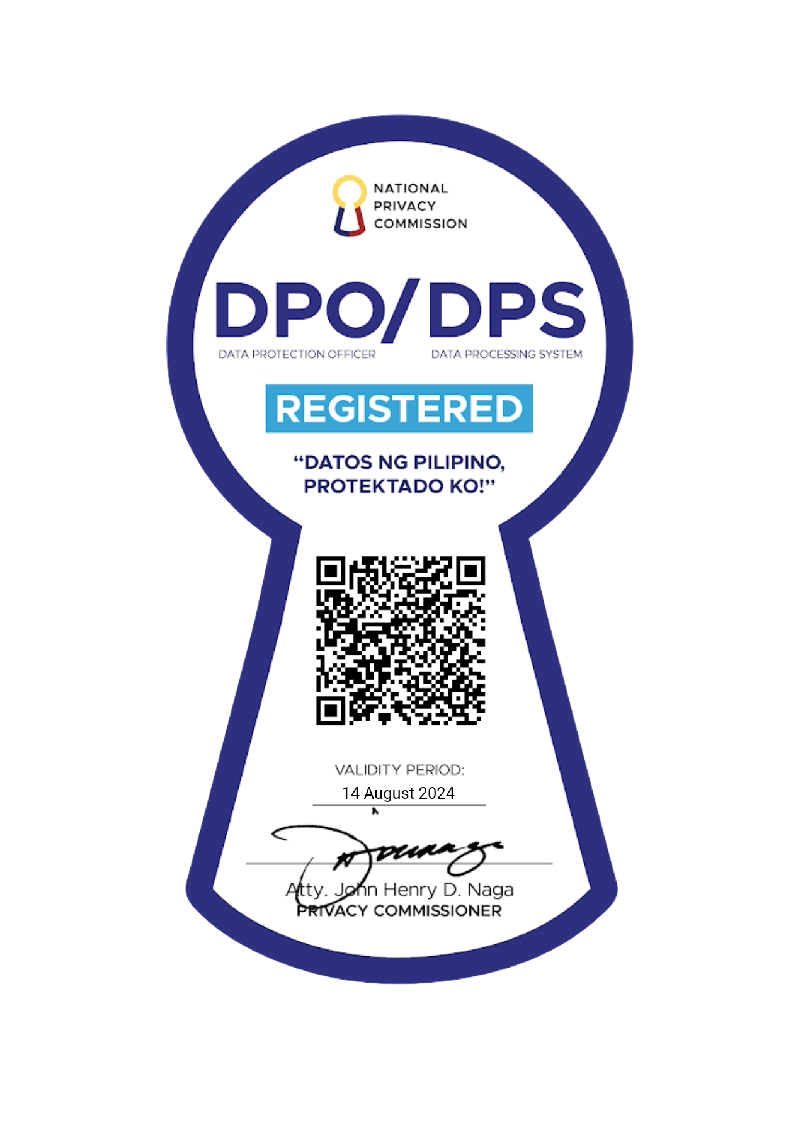-
About Us
Probe CX is a tech-powered, global customer experience organisation that amplifies human capabilities with technological excellence.
-
Vision and Culture
We help our clients become modern digital organisations by combining the latest technology with people, process and data.
-
Executive Team
Meet the team with unmatched experience committed to helping organisations create environments for digitally-enabled CX to thrive.
-
Compliance
Industry-recognised certifications to protect what matters most to our clients and their customers.
-
Locations
Over 19,000 team members delivering exceptional customer experiences across five countries.
-
Reasons to choose Probe CX
The top nine reasons to get more closely acquainted with Probe CX.
TECHNOLOGY & TRANSFORMATION SERVICES
 Creating exceptional customer experiences by 'doing it better'
Creating exceptional customer experiences by 'doing it better'
Optimise your customer experience by designing, deploying and managing digital solutions customised to your unique needs.
Continue reading- Blog
- RPA for supply chain management
RPA for supply chain management

Bloomberg declares: “The global supply chain is a mess.”
CNN reports: “The global supply chain nightmare is about to get worse.”
CNBC adds: “The pandemic has left one very destructive issue in its wake: disruption to global supply chains.”
Given such negativity, it has never been more important for executives and business leaders to think outside the box when navigating supply chain management and that is why an increasing number are turning to the benefits of robotic process automation (RPA). While many organisations have embraced various Supply Chain Management (SCM) systems, the dream of complete process automation and data integration has largely remained out of reach but that is set to change as digital transformation changes how companies deliver products, conduct operations and fulfil orders.
After all, what could be more appealing at a time of global supply chain pressure than the ability to boost efficiencies and slash costs without being forced to invest in major infrastructure or recruit additional staff?

What is RPA in Supply Chain?
By definition, robotic process automation sees software solutions used to automate and accelerate time-consuming and repetitive processes that have traditionally been done manually. From order processing and shipment scheduling to invoicing and customer service, supply chain management involves countless tasks and activities that can benefit from the power of RPA.
One study has shown RPA results in a 43% time reduction for tasks such as credit, collections and billing, meaning there is huge potential for companies that want to more effectively manage their complex supply chains. Better still, automation allows employees to spend less time on repetitive robotic jobs and increasingly focus on higher-value work such as problem-solving and creative solutions.
RPA has already revolutionised many industries, with Grandview tipping its global market value to soar from $358 million in 2017 to $3.11 billion in 2025. However, despite how much it has changed the face of healthcare, retail and manufacturing, supply chain operations have been less quick to embrace robotic process automation technology. One reason is the early iterations of RPA robots were not flexible enough to handle the complexity of many supply chain scenarios and therefore could only be used to automate those elements that were simple and followed set patterns.
That is fast changing though, with artificial intelligence (AI) and machine learning enhancing the cognitive abilities that enable modern RPA tools to increasingly resemble humans. The day is fast approaching, if it has not only arrived in some areas, when RPA in supply chain management can be used far beyond repetitive outcomes and actually predict outcomes and support complex decision-making.

RPA Supply Chain Use Cases
Let’s explore various areas of supply chain management that can benefit from RPA.
- Order Processing and Payments: it is hard to believe but there are still some businesses yet to embrace the digitisation of order placement and processing, preferring to continue with time-consuming and labour-intensive manual paperwork procedures. Supply chain management can immediately be improved by automating product selection so that such information is directly fed into a company’s database. In turn, payment platforms can then process the correct amount and software solutions can distribute email and text message confirmations of orders. Automating such back-office tasks means employees can focus on more rewarding work that actually requires human intelligence.
- Communication: supply chains are only strong as the communication that unfolds between key players across a network, be they suppliers, manufacturers, transport companies or customers. Despite knowing this, far too many companies far too often fail to establish and maintain strong communication practices. RPA can play a positive role in ensuring proper collaboration between staff and contractors across different departments, with emails and text messages able to be automatically distributed when shipments have been dispatched, delayed, cancelled or, most satisfying, received. Effective communication at a supply chain level will not only improve staff morale and efficiency but help ensure a smoother customer experience.
- Inventory Management: there are few things worse for a supply chain manager than belatedly learning there are not enough products to meet customer demand. While human error can result in such nightmares unfolding, RPA makes inventory management easier by monitoring stock levels and not only immediately raising alerts when they fall but automatically reordering products at certain threshold points. Intelligent RPA systems are even taking this a step further by studying historical data and monitoring demand patterns to improve inventory management efficiencies and be ready to respond to spikes in demand, thus resulting in happier customers and more satisfied employees.
- Vendor Selection: traditionally an entirely manual process, vendor selection is the latest supply chain process being transformed courtesy of RPA. Anyone who has been asked to manage the selection of a vendor knows how time-consuming the process can be – prepare a request for quotation, communicate with potential vendors, analyse their documents, evaluate their credentials and cross-check references, and finally make a decision. RPA can make many of these tasks more efficient, productive and seamless, with human employees able to then focus on the more subjective aspects such as project specification, list generation and face-to-face negotiations.
- Vendor or Partner Onboarding: the process for bringing on a vendor or partner can take human staff hours to complete, with the likes of multiple contracts, government forms, verifications, business rules and data requirements needing to be addressed and/or adapted. As proven by HR teams that have embraced RPA, automation robots can tick these boxes in minimal time and significantly reduce the chance of errors.
- Shipment Status: customers understandably want to track the progress of their shipments but that does not make managing their inquiries any less time-consuming. In a traditional setting, this would see a staff member forced to take a call or open an email, take note of the shipment, investigate its status on the business’s system and then either phone or email the customer with an update. Now consider the RPA alternative, which involves a robot being developed and deployed to handle the entire process from initial call or email to resolution. This means human intervention is only needed in unique situations, allowing staff to focus on more creative tasks than customer enquiries.
- Supply and Demand Planning: studying and predicting demand has always been a challenge for companies, with the risk of manual errors and the certainty of time-consuming processes heaping pressure on employees. From gathering and analysing data to packaging it in a presentable format and communicating findings with key colleagues, it’s little wonder many have often yearned for a simpler system. Fortunately, the combination of RPA, AI and machine learning is allowing businesses to study supply, predict demand and be better prepared for unexpected spikes.

Benefits of RPA in Supply Chain Management
Having highlighted various supply chain functions that are embracing RPA, let’s now consider specific ways that automation is streamlining processes.
- Eliminates the manual input of purchase orders and other administrative tasks
- Increases ROI by bridging the gap with suppliers
- Eliminates human error and duplication in the supply chain process
- Automates B2B processes without costly development
- Responds to supply chain requests for proposals, quotes and questions
- Establishes new levels of engagement throughout the supply chain
- Analyses repeatable tasks to identify supply chain efficiencies
- Seamlessly integrates with other supply chain systems and tools.

Implementation Challenges
For all the positives outlined above, the RPA journey can be a tricky one, especially for organisations looking to implement automation for the first time. Having previously highlighted why creating a quality business case is crucial when pursuing an RPA tool, here are a few specific challenges supply chain managers may encounter when they begin to strategise automation.
- IT Support: it is essential that IT departments or partners are not only consulted but invested when an organisation is exploring or pursuing RPA supply chain goals. External consultants that specialise in the field are an excellent way to ensure the appropriate support and expertise is available.
- Stakeholder Expectations: while stakeholders have started embracing RPA, many still do not see it as a priority and some may even push back if they fear it will disrupt their current processes. That is why it is imperative to build and clearly communicate the case for why automation will deliver both short- and long-term benefits for not only you but them.
- Employee Engagement: there are few important factors when rolling out an RPA strategy than ensuring employees are equally committed to its success. Engage with your staff, communicate the benefits and build buy-in from across the organisation to ensure that one’s automation journey does not falter before it has barely begun.

Summary
RPA undoubtedly has the power to revolutionise supply chain management. That said, implementing a successful strategy is no mean feat. It requires strategic thinking, in-depth planning and business leaders to generate genuine enthusiasm for the challenge among staff, partners and other stakeholders. The rewards are well worth it though, with enhanced efficiency and productivity, cost reductions and more satisfied employees and customers all within reach for companies that have the conviction to choose a smarter way.
RPA is enabling many organisations to revolutionise traditional workplace practices, including one of Australia’s leading security companies that was encountering significant billing issues due to a COVID-inspired surge in demand. Discover how RPA helped it achieve an 80% reduction in bad debt/write-offs and save around $80,000 in manual effort costs.
Related Articles
Technology
RPA in finance and accounting - a digital transformation
The finance and accounting sector is burdened by repetitive and time-consuming tasks, which is why robotic process automation is ideal...
Artificial Intelligence
What are PDD and SDD In RPA?
Do you know what PDDs and SDDs are in RPA? Here’s the difference between the two, as well as how they develop an automated process.
Knowledge services
What is a debt management and collections system?
Creditors need to prepare for a rocky road ahead and that starts with gaining a better understanding of the vital role debt collection agencies play in mitigating losses.
© Copyright 2024 Probe CX | All Rights Reserved
Privacy Policy | Financial Hardship Policy | Whistleblower Policy | Complaints Procedure | Supplier Code of Conduct | Make a Payment | Client Login





